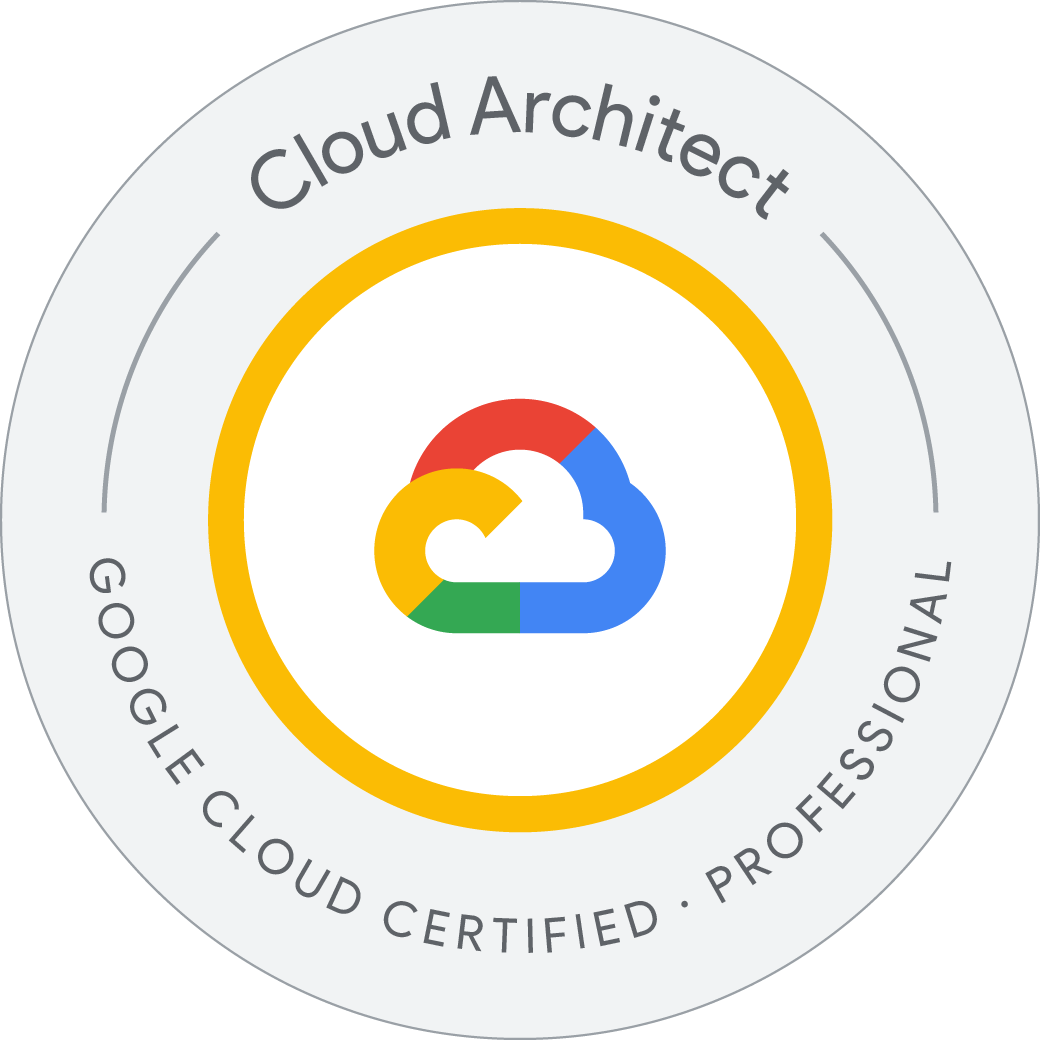Dataflow: Qwik Start - Templates
In this lab, you learn how to create a streaming pipeline using one of Google’s Dataflow templates. More specifically, you use the Pub/Sub to BigQuery template, which reads messages written in JSON from a Pub/Sub topic and pushes them to a BigQuery table. You can find the documentation for this template in the Get started with Google-provided templates Guide.
- Create a BigQuery dataset and table
- Create a Cloud Storage bucket
- Create a streaming pipeline using the Pub/Sub to BigQuery Dataflow template
Ensure that the Dataflow API is successfully re-enabled
To ensure access to the necessary API, restart the connection to the Dataflow API.
- In the Cloud Console, enter “Dataflow API” in the top search bar. Click on the result for Dataflow API.
- Click Manage.
- Click Disable API.
If asked to confirm, click Disable.
- Click Enable.
When the API has been enabled again, the page will show the option to disable.
Create a BigQuery dataset, BigQuery table, and Cloud Storage bucket using Cloud Shell
Let’s first create a BigQuery dataset and table.
Run the following command to create a dataset called taxirides
Welcome to Cloud Shell! Type "help" to get started.
Your Cloud Platform project in this session is set to qwiklabs-gcp-02-3029984c9df7.
Use “gcloud config set project [PROJECT_ID]” to change to a different project.
student_01_932d053b64d1@cloudshell:~ (qwiklabs-gcp-02-3029984c9df7)$ bq mk taxirides
Dataset 'qwiklabs-gcp-02-3029984c9df7:taxirides' successfully created.
student_01_932d053b64d1@cloudshell:~ (qwiklabs-gcp-02-3029984c9df7)$
Now that you have your dataset created, you’ll use it in the following step to instantiate a BigQuery table.
- Run the following command to do so:
student_01_932d053b64d1@cloudshell:~ (qwiklabs-gcp-02-3029984c9df7)$ bq mk \
--time_partitioning_field timestamp \
--schema ride_id:string,point_idx:integer,latitude:float,longitude:float,\
timestamp:timestamp,meter_reading:float,meter_increment:float,ride_status:string,\
passenger_count:integer -t taxirides.realtime
Table 'qwiklabs-gcp-02-3029984c9df7:taxirides.realtime' successfully created.
student_01_932d053b64d1@cloudshell:~ (qwiklabs-gcp-02-3029984c9df7)$
On its face, the bq mk command looks a bit complicated. However, with some assistance from the BigQuery command-line documentation, we can break down what’s going on here. For example, the documentation tells us a little bit more about schema:
- Either the path to a local JSON schema file or a comma-separated list of column definitions in the form
[FIELD]:[DATA_TYPE],[FIELD]:[DATA_TYPE].
In this case, we are using the latter—a comma-separated list.
Create a Cloud Storage bucket using Cloud Shell
Now that we have our table instantiated, let’s create a bucket.
Use the Project ID as the bucket name to ensure a globally unique name:
student_01_932d053b64d1@cloudshell:~ (qwiklabs-gcp-02-3029984c9df7)$ export BUCKET_NAME=qwiklabs-gcp-02-3029984c9df7
student_01_932d053b64d1@cloudshell:~ (qwiklabs-gcp-02-3029984c9df7)$ gsutil mb gs://$BUCKET_NAME/
Creating gs://qwiklabs-gcp-02-3029984c9df7/...
student_01_932d053b64d1@cloudshell:~ (qwiklabs-gcp-02-3029984c9df7)$
Run the pipeline
Deploy the Dataflow Template:
student_01_932d053b64d1@cloudshell:~ (qwiklabs-gcp-02-3029984c9df7)$ gcloud dataflow jobs run iotflow \
--gcs-location gs://dataflow-templates-us-west1/latest/PubSub_to_BigQuery \
--region us-west1 \
--worker-machine-type e2-medium \
--staging-location gs://qwiklabs-gcp-02-3029984c9df7/temp \
--parameters inputTopic=projects/pubsub-public-data/topics/taxirides-realtime,outputTableSpec=qwiklabs-gcp-02-3029984c9df7:taxirides.realtime
createTime: '2024-06-30T09:58:08.882178Z'
currentStateTime: '1970-01-01T00:00:00Z'
id: 2024-06-30_02_58_07-9097816481133158380
location: us-west1
name: iotflow
projectId: qwiklabs-gcp-02-3029984c9df7
startTime: '2024-06-30T09:58:08.882178Z'
type: JOB_TYPE_STREAMING
student_01_932d053b64d1@cloudshell:~ (qwiklabs-gcp-02-3029984c9df7)$
In the Google Cloud Console, on the Navigation menu, click Dataflow > Jobs, and you will see your dataflow job.
Please refer the document for more information.
You’ll watch your resources build and become ready for use.
Now, let’s go view the data written to BigQuery by clicking on BigQuery found in the Navigation menu.
- When the BigQuery UI opens, you’ll see the taxirides dataset added under your project name and realtime table underneath that.
Submit a query
You can submit queries using standard SQL.
- In the BigQuery Editor, add the following to query the data in your project:
SELECT * FROM `qwiklabs-gcp-02-3029984c9df7.taxirides.realtime` LIMIT 1000
Great work! You just pulled 1000 taxi rides from a Pub/Sub topic and pushed them to a BigQuery table. As you saw firsthand, templates are a practical, easy-to-use way to run Dataflow jobs.
Here is a sample of the 10 records
[{
"ride_id": "b7a027d0-ff51-4246-88e1-3d9d6409ab72",
"point_idx": "651",
"latitude": "40.704780000000007",
"longitude": "-74.00507",
"timestamp": "2024-06-30 09:58:28.117960 UTC",
"meter_reading": "15.845455",
"meter_increment": "0.024340177",
"ride_status": "enroute",
"passenger_count": "1"
}, {
"ride_id": "a9844c4c-ae4b-471c-9fbb-d890433277dc",
"point_idx": "53",
"latitude": "40.74559",
"longitude": "-73.99457000000001",
"timestamp": "2024-06-30 09:58:33.234110 UTC",
"meter_reading": "1.8110553",
"meter_increment": "0.034170855",
"ride_status": "enroute",
"passenger_count": "1"
}, {
"ride_id": "7445c505-e073-42a2-81b1-016762a83d49",
"point_idx": "343",
"latitude": "40.65466",
"longitude": "-73.807210000000012",
"timestamp": "2024-06-30 09:58:34.719850 UTC",
"meter_reading": "7.841809",
"meter_increment": "0.022862416",
"ride_status": "enroute",
"passenger_count": "1"
}, {
"ride_id": "1b914424-ac0f-423d-9ce8-eb69f09eada4",
"point_idx": "250",
"latitude": "40.735490000000006",
"longitude": "-73.91652",
"timestamp": "2024-06-30 09:58:33.731600 UTC",
"meter_reading": "5.298473",
"meter_increment": "0.021193892",
"ride_status": "enroute",
"passenger_count": "1"
}, {
"ride_id": "4254ba48-e0fa-4e50-8bfa-3d7a871f2f21",
"point_idx": "133",
"latitude": "40.65073",
"longitude": "-73.785630000000012",
"timestamp": "2024-06-30 09:58:28.753720 UTC",
"meter_reading": "1.7530973",
"meter_increment": "0.013181183",
"ride_status": "enroute",
"passenger_count": "6"
}, {
"ride_id": "ca304808-31d8-44e3-8979-ecc77fe592b9",
"point_idx": "2269",
"latitude": "40.711650000000006",
"longitude": "-74.164930000000012",
"timestamp": "2024-06-30 09:58:34.359620 UTC",
"meter_reading": "51.31192",
"meter_increment": "0.022614332",
"ride_status": "enroute",
"passenger_count": "1"
}, {
"ride_id": "89be6820-ff08-48cf-9529-ca64f43e7191",
"point_idx": "499",
"latitude": "40.74078",
"longitude": "-73.94543",
"timestamp": "2024-06-30 09:58:34.611600 UTC",
"meter_reading": "10.899726",
"meter_increment": "0.021843137",
"ride_status": "enroute",
"passenger_count": "1"
}, {
"ride_id": "beb8ed12-438d-440a-8315-b1860cc4b30d",
"point_idx": "206",
"latitude": "40.73311",
"longitude": "-73.987320000000011",
"timestamp": "2024-06-30 09:58:28.656480 UTC",
"meter_reading": "8.462441",
"meter_increment": "0.04107981",
"ride_status": "enroute",
"passenger_count": "1"
}, {
"ride_id": "ac8876a6-1051-491e-aee7-39f03a51daca",
"point_idx": "1445",
"latitude": "40.73734",
"longitude": "-73.85221",
"timestamp": "2024-06-30 09:58:33.244580 UTC",
"meter_reading": "26.319237",
"meter_increment": "0.018214004",
"ride_status": "enroute",
"passenger_count": "1"
}, {
"ride_id": "e962316d-27e2-446b-a157-3c17b59b981d",
"point_idx": "6",
"latitude": "40.774730000000005",
"longitude": "-73.954050000000009",
"timestamp": "2024-06-30 09:58:33.880690 UTC",
"meter_reading": "0.12327273",
"meter_increment": "0.020545455",
"ride_status": "enroute",
"passenger_count": "1"
}]
You created a streaming pipeline using the Pub/Sub to BigQuery Dataflow template, which reads messages written in JSON from a Pub/Sub topic and pushes them to a BigQuery table.
History
student_01_932d053b64d1@cloudshell:~ (qwiklabs-gcp-02-3029984c9df7)$ history
1 bq mk taxirides
2 bq mk --time_partitioning_field timestamp --schema ride_id:string,point_idx:integer,latitude:float,longitude:float,timestamp:timestamp,meter_reading:float,meter_increment:float,ride_status:string,passenger_count:integer -t taxirides.realtime
3 export BUCKET_NAME=qwiklabs-gcp-02-3029984c9df7
4 gsutil mb gs://$BUCKET_NAME/
5 gcloud dataflow jobs run iotflow --gcs-location gs://dataflow-templates-us-west1/latest/PubSub_to_BigQuery --region us-west1 --worker-machine-type e2-medium --staging-location gs://qwiklabs-gcp-02-3029984c9df7/temp --parameters inputTopic=projects/pubsub-public-data/topics/taxirides-realtime,outputTableSpec=qwiklabs-gcp-02-3029984c9df7:taxirides.realtime
6 history
student_01_932d053b64d1@cloudshell:~ (qwiklabs-gcp-02-3029984c9df7)$



